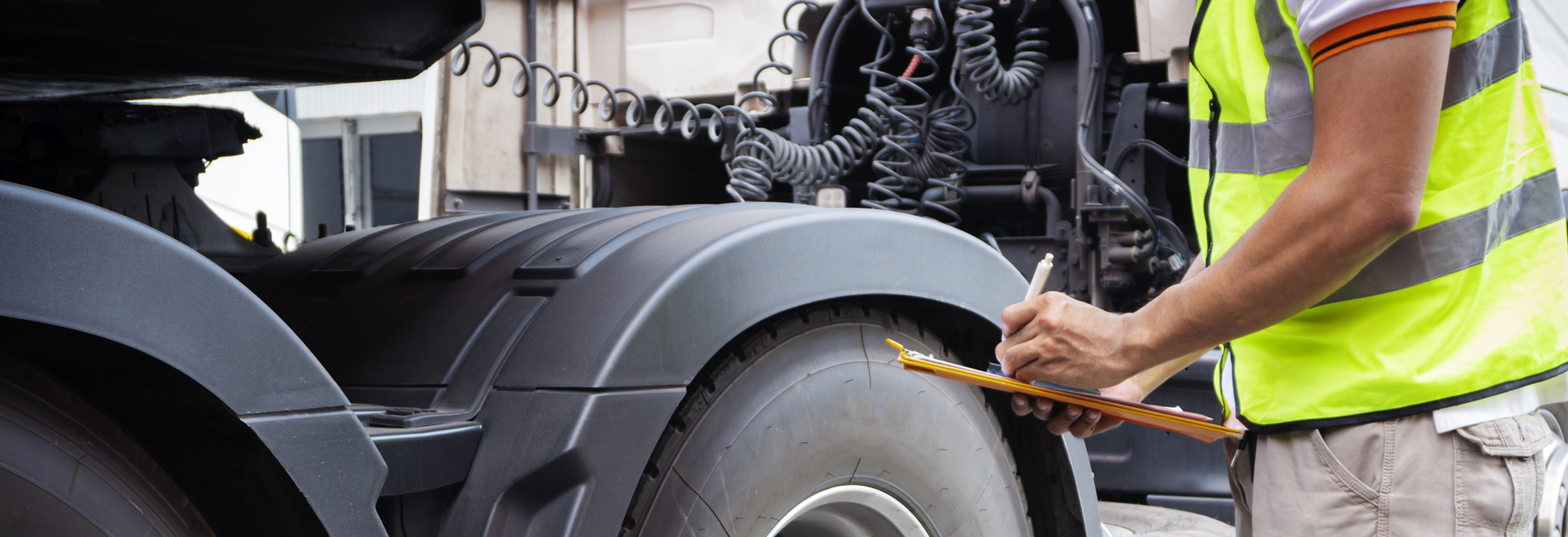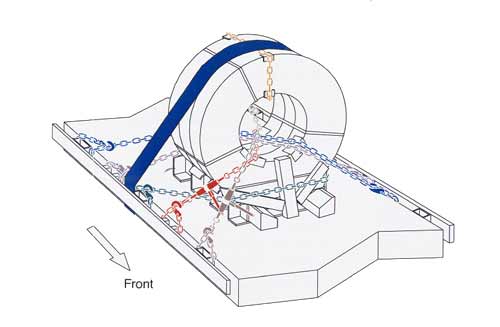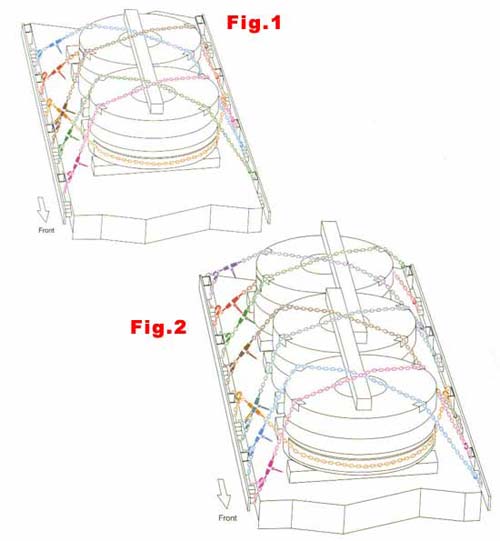
Secure Slitted(Cut) Coil
Slitted Coil Securing Procedure (eye forward)

Slitted Coil Loading Procedure (eye to sky)


Slitted Coil “Eye Forward” Loading Procedure:
-
Set 1 coil rack for each 10,000 pounds of coil weight (minimum of 3) and lay beveled lumber on each side with the small edge of the lumber facing up.
- For coils under 30,000 pounds, use small coil racks and beveled 4″x4″ lumber.
- For coils over 30,000 pounds, use large coil racks and beveled 6″x6″ lumber.
- Lay rubber belting and waterproof paper on timbers according to shipper’s specifications and set the coil on timbers.
- Once the coil is loaded on the trailer, inspect the banding on the coils to be sure they are secure and in good condition.
- Secure a choker chain around the top of the coils to ensure they stay together.
- Using edge protection at all points of contact, secure pairs of chains in an “X” through the eye of the coil. Use 1 chain per every 10,000 pounds of coil weight, plus 1 extra chain for safety.
- Secure a trip chain in front using wood blocking as shown above, to keep the chains from touching the coils.
- Tarp the load as securely as possible.
- Secure all loose equipment, including chains and binders, lumber, tarps, rubber belting, coil racks, edge protectors, and load bar.
Slitted Coil “Eye to Sky” Loading Procedure:
- After loading the coils on the trailer in the approved location, check the pallets and banding to make sure they are secure and in good condition.
- Load the next pallet of coils on top of the first, centering the coils on top of one another.
- Lay a 4″x4″ timber across coils lengthwise. If the row of coils is too long for one timber, use two timbers, overlapping them side-by-side at the center (see illustrations above)
- For each stack of coils, use edge protectors and secure 2 chains in an “X” over the top of the 4″x4″ timbers.
- Using rubber-coated edge protectors, secure safety chains horseshoed around the front and back stacks of each group of coils to prevent forward and backward movement.
- Tarp the load securely as required.
- Secure all loose equipment, including chains and binders, lumber, tarps, rubber belting, coil racks, edge protectors, and load bar.

